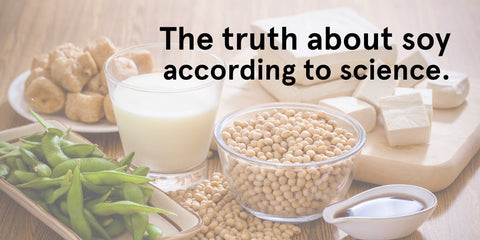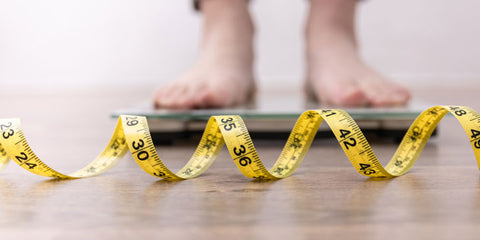Article Written by Dr. Mark Messina for Soy Nutrition Institute
Excitement about the possibility that soyfoods reduce risk of developing breast cancer began in earnest 30 years ago. While over this time support for a protective effect has waxed and waned, there has been a constant struggle to identify a mechanism by which soy could exert its proposed protective effect. It isn’t necessary to know how something works to know that it does, but in the field of cancer research, it is extremely helpful. New research offers up a possible mechanism, but more on that later.
In 1990, rodent research showed that laboratory diets containing soy inhibited the development of chemically induced breast cancer.1 This finding, along with the recognition that historical rates of breast cancer mortality were low in soyfood-consuming countries,2 led directly to the organization of a workshop by the National Cancer Institute (NCI) charged with exploring the role of soy in breast cancer prevention and treatment.3 The findings of this workshop culminated in the NCI funding soy research. This funding gave soy research in general a huge boost.
At the time the funding was allocated, two theories about the means by which soy could inhibit the development of breast cancer prevailed. One was that the isoflavones in soy could function as anti-estrogens, thereby inhibiting the proliferative effect of estrogen on breast cancer cells.3 The other, was that genistein, the primary isoflavone in soy, could inhibit the activity of enzymes overexpressed in cancer cells.4 However, support for those mechanisms wasn’t forthcoming. To this day, there is little meaningful evidence that isoflavones act as anti-estrogens, and it has long been recognized that the concentrations of genistein required to inhibit enzyme activity far exceed the tissue concentrations that can be achieved in response to the consumption of soyfoods.
And yet, epidemiologic studies assessing adult soy intake continue to show that soy consumption may be associated with at least a modest reduction in the risk of breast cancer.5 One explanation for this association could be that soy consumption early in life results in later life protection against breast cancer. This hypothesis has substantial animal and epidemiologic support.6 Since childhood eating habits tend to track into adulthood, high-soyfood-consuming women likely also regularly consumed soy when young. There are several intriguing but yet-to-be proven proposed mechanisms for the benefit of early soy consumption.
There is also the uncertainty of how to explain the findings from observational studies that post-diagnosis soy intake is associated with reduced breast cancer recurrence and mortality.7,8 Substantial clinical work involving healthy women, women at risk of breast cancer, and breast cancer patients, shows neither soy, nor isoflavone exposure, affects markers of breast cancer risk including mammographic density9,10 and in vivo breast cell proliferation.11-16 This work is an argument for safety, but not benefit. Perhaps isoflavones work in a way that is not detected by these standard measures of breast cancer risk, such as by inhibiting angiogenesis.17,18
Angiogenesis refers to blood vessel growth, which is a requirement for tumor growth.
Although animal studies are a legitimate part of the scientific literature, in the hierarchy of evidence, which is usually pictured as a pyramid, they are down at the bottom. In the field of nutrition, animal studies are used primarily for hypothesis generation. Nevertheless, new preclinical research described below is intriguing.
Japanese researchers developed an animal model of mammary ductal dysplasia.19 During breast tumorigenesis, mammary ductal dysplasia is observed in precancerous lesions and early stage breast cancers. In this model, they found that the hormone estrogen caused dysplasia formation with cell proliferation. They also noted that the expression of the protooncogene Myc, which is a downstream target of estrogen signaling, increased in mammary epithelial cells. When the animals were given genistein or equol (a bacterially derived metabolite of the soybean isoflavone daidzein), the effects of estrogen on dysplasia were inhibited.
The findings show that in this model, genistein and equol function as anti-estrogens, thereby inhibiting the effects of the hormone on the development of the early stages of breast cancer. The authors of this study concluded that their findings “suggest that isoflavones can be utilized to prevent breast cancer.”
In conclusion, several mechanisms have been proposed to explain studies showing that soy intake reduces the development of breast cancer and that post-diagnosis intake improves the survival of breast cancer patients. More work in this area is needed. Newly published research adds to the list of possible protective mechanisms.
References
- Barnes S, Grubbs C, Setchell KD, et al. Soybeans inhibit mammary tumors in models of breast cancer. Prog Clin Biol Res. 1990;347239-53.
- Pisani P, Parkin DM, Bray F, et al. Estimates of the worldwide mortality from 25 cancers in 1990. Int J Cancer. 1999;83(1):18-29.
- Messina M, Barnes S. The role of soy products in reducing risk of cancer. J Natl Cancer Inst. 1991;83(8):541-6.
- Akiyama T, Ishida J, Nakagawa S, et al. Genistein, a specific inhibitor of tyrosine-specific protein kinases. J Biol Chem. 1987;262(12):5592-5.
- Zhao TT, Jin F, Li JG, et al. Dietary isoflavones or isoflavone-rich food intake and breast cancer risk: A meta-analysis of prospective cohort studies. Clin Nutr. 2019;38(1):136-45.
- Messina M, Rogero MM, Fisberg M, et al. Health impact of childhood and adolescent soy consumption. Nutr Rev. 2017;75(7):500-15.
- Chi F, Wu R, Zeng YC, et al. Post-diagnosis soy food intake and breast cancer survival: A meta-analysis of cohort studies. Asian Pacific journal of cancer prevention : APJCP. 2013;14(4):2407-12.
- Qiu S, Jiang C. Soy and isoflavones consumption and breast cancer survival and recurrence: a systematic review and meta-analysis. Eur J Nutr. 2019;58(8):3079-90.
- Hooper L, Madhavan G, Tice JA, et al. Effects of isoflavones on breast density in pre- and post-menopausal women: a systematic review and meta-analysis of randomized controlled trials. Hum Reprod Update. 2010;16(6):745-60.
- Wu AH, Spicer D, Garcia A, et al. Double-blind randomized 12-month soy intervention had no effects on breast MRI fibroglandular tissue density or mammographic density. Cancer Prev Res (Phila). 2015;8(10):942-51.
- Hargreaves DF, Potten CS, Harding C, et al. Two-week dietary soy supplementation has an estrogenic effect on normal premenopausal breast. J Clin Endocrinol Metab. 1999;84(11):4017-24.
- Sartippour MR, Rao JY, Apple S, et al. A pilot clinical study of short-term isoflavone supplements in breast cancer patients. Nutr Cancer. 2004;49(1):59-65.
- Palomares MR, Hopper L, Goldstein L, et al. Effect of soy isoflavones on breast proliferation in postmenopausal breast cancer survivors. Breast Cancer Res Treatment. 2004;88 (Suppl 1)4002 (Abstract).
- Cheng G, Wilczek B, Warner M, et al. Isoflavone treatment for acute menopausal symptoms. Menopause. 2007;14(3 Pt 1):468-73.
- Khan SA, Chatterton RT, Michel N, et al. Soy isoflavone supplementation for breast cancer risk reduction: A randomized phase II trial. Cancer Prev Res (Phila). 2012;5(2):309-19.
- Shike M, Doane AS, Russo L, et al. The effects of soy supplementation on gene expression in breast cancer: a randomized placebo-controlled study. J Natl Cancer Inst. 2014;106(9).
- Sutrisno S, Aprina H, Simanungkalit HM, et al. Genistein modulates the estrogen receptor and suppresses angiogenesis and inflammation in the murine model of peritoneal endometriosis. J Tradit Complement Med. 2018;8(2):278-81.
- Farina HG, Pomies M, Alonso DF, et al. Antitumor and antiangiogenic activity of soy isoflavone genistein in mouse models of melanoma and breast cancer. Oncol Rep. 2006;16(4):885-91.
- Itou J, Takahashi R, Sasanuma H, et al. Estrogen induces mammary ductal dysplasia via the upregulation of Myc expression in a DNA repair-deficient condition. iScience. 2020;23






